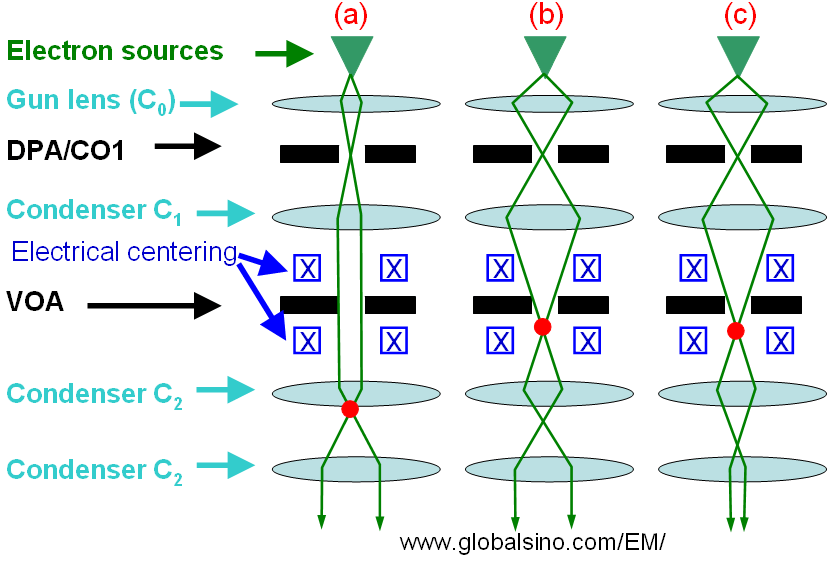|
This book (Practical Electron Microscopy and Database) is a reference for TEM and SEM students, operators, engineers, technicians, managers, and researchers.
|
=================================================================================
In most modern, practical TEMs/STEMs, the gun lens is used to position the first crossover in relation to the beam-defining aperture (normally the C2 aperture). The crossover locates high above the aperture with a strong gun lens, while the crossover is close to the aperture with a weak gun lens. Both the beam current and aberrations on the beam are higher for the latter case. Therefore, when small, intense and low-aberration electron beams are needed, e.g. for diffraction in TEM and analytical STEM, a strong gun lens is selected; while a weak gun lens is selected when high probe currents are needed (e.g. TEM imaging). Note that the TEM system will automatically select the relevant strength of the gun lens once the users push a bottom of STEM, diffraction, or TEM modes even though they have realized the strength changes.
In many lab-designed microscopes, the condenser optics can be different from the commercial ones. For instance, Figure 3589 shows the gun lens (C0) runs at a specific excitation to produce a crossover (CO1) near the gun’s differential pumping aperture (DPA). However, the change of strengths of C1 (condenser lens 1), C2 (condenser lens 2), and/or C3 (condenser lens 3) affects the distance between the crossover in red and virtual objective aperture (VOA) and further, beam current, source demagnification, spatial resolution, aberrations, convergence, coherence, and/or signal-to-noise ratio of the images as indicated by Figure 3589 (a), (b), and (c).

Figure 3589. Different probe configurations obtained by the adjustments of the three condenser lenses.
By weakening the strength of the condenser lens, the electron beam incident on the specimen is enlarged so that a wide area on the specimen is covered. That is, the electron beam can be approximately considered as a plane wave incident on the specimen.
|
